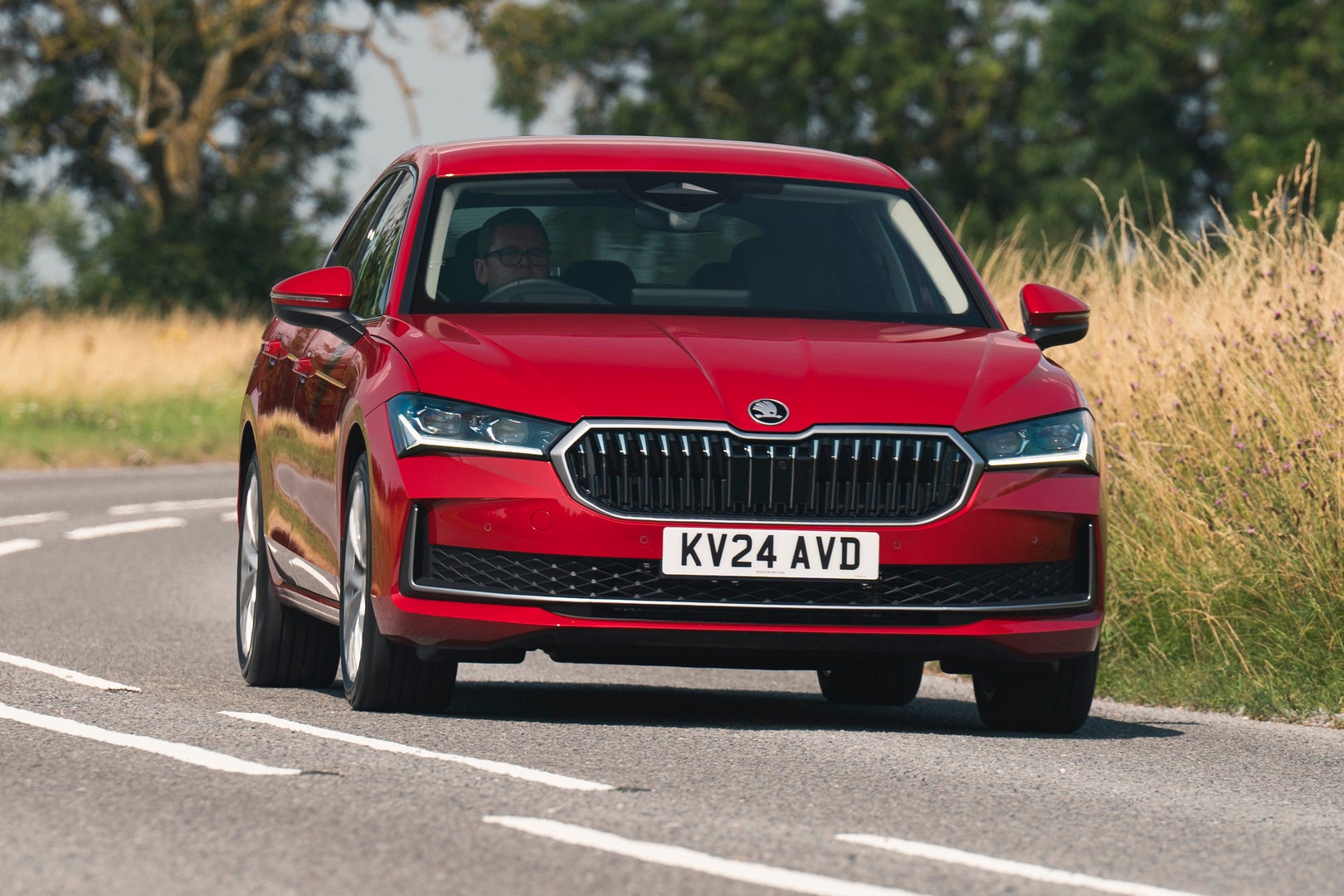
RDE2 stands for Real Driving Emissions step 2. It's a real-world testing procedure that all newly launched cars must meet.
This test provides a direct correlation between the emissions a car achieves in the lab under the Worldwide Light Vehicle Testing Procedures (WLTP) and during normal driving on the road.
Why was RDE2 introduced?
RDE2 testing was introduced to bridge the gap between WLTP fuel economy and emissions findings and the figures drivers can expect to see on the road. While WLTP figures are more accurate than the older New European Driving Cycle (NEDC) tests, they are still conducted in laboratory settings, making them hard to replicate during real-world driving. RDE2 ensures that manufacturers cannot manipulate figures, as tests are conducted under actual driving conditions.
What exactly is the RDE test?
Before RDE tests, vehicle emissions were measured in laboratories. While controlled and cost-effective, this often produced results that were difficult to replicate in real-world driving. This was especially true for the NEDC test, and even the more comprehensive WLTP testing had limitations. RDE tests are conducted on the road with equipment attached to the vehicle's exhaust and a human driver, providing results that reflect normal driving conditions.
The RDE1 test was introduced in September 2017 and became mandatory a year later. It required vehicles to achieve emissions within 2.1 times the NOx figures produced under laboratory conditions during real-world driving. These initial targets were set to give manufacturers time to adapt to the new testing regime.
January 2020 saw the implementation of the stricter RDE2 testing. Under RDE2, all new cars launched on or after January 2020 need to achieve emissions within 1.5 times the WLTP figures when driven on the road.
How is the RDE2 test carried out?
Unlike laboratory tests where the engine is tested separately, the RDE test involves taking portable emissions measuring equipment (PEMS) out of the lab and attaching it directly to the car's exhaust.
The vehicle is then driven on a variety of roads – urban, rural, and motorway – under different conditions. The results are adjusted for factors like weather and traffic to provide the most accurate representation of the vehicle's emissions during normal driving.

Are the RDE2 tests really that much more effective?
In a word – yes. RDE testing has revealed that some cars produce up to 12 times the amount of NOx gases measured under WLTP lab tests. A study by Emissions Analytics in May 2017 found that of 131 Euro 6 compliant diesel cars tested, only 15 met their NOx threshold under real-world conditions.
RDE2 testing provides governments with a clearer picture of vehicle emissions and allows consumers to purchase cars with confidence in their environmental performance.
How does RDE2 affect the VED tax you pay?
In the 2017 Autumn Budget, it was announced that diesel cars not conforming to RDE2 emissions standards would be taxed as though they sit in the VED band above. This policy remains in effect as of early 2025.
For example, a diesel car emitting 118g/km of CO₂ would typically fall into the 111–130g/km band. However, if the vehicle is not RDE2 compliant, it is taxed in the 131–150g/km band.
From April 2025, the rates will be updated. For cars emitting 111–130g/km of CO₂, the first-year rate will be £440, while for those emitting 131–150g/km, the amount is £540.
Therefore, a non-RDE2 compliant diesel car emitting 118g/km of CO₂ would incur a first-year VED of £540, compared to £440 for an RDE2 compliant vehicle with the same emissions.
Why is RDE2 important for company car drivers?
RDE2 compliance has significant implications for company car drivers, particularly concerning Benefit-in-Kind (BiK) tax rates. For the 2025/26 tax year, the BiK rate for zero-emission vehicles is set at 3% of the vehicle's list price. For vehicles emitting over 155g/km of CO₂, the BiK rate can be as high as 37%.
A non-RDE2 compliant diesel vehicle emitting 128g/km of CO₂ would fall into a higher BiK tax band compared to an RDE2 compliant vehicle with the same emissions. This difference can result in a higher BiK rate for the non-compliant vehicle, leading to increased tax liabilities for the driver.
It's important to note that BiK rates are subject to change, and the government has outlined plans to gradually increase these rates over the coming years.
RDE1 (Real Driving Emissions step 1) was the initial stage of real-world emissions testing, introduced in September 2017 and made mandatory for new vehicles in September 2018. Under RDE1, diesel cars were allowed to emit up to 2.1 times the laboratory-tested NOx (nitrogen oxides) emissions recorded in WLTP tests while driving on the road. This initial phase was designed to help manufacturers transition to stricter real-world emissions testing and adapt their vehicles accordingly. However, RDE1 still allowed for a significant margin of error, leading to the stricter implementation of RDE2 in January 2020.
Yes, RDE2 applies to both petrol and diesel vehicles, as all new cars must meet its real-world emissions standards. However, RDE2 compliance has a greater impact on diesel vehicles because they are subject to additional taxation if they do not meet the standard. Non-RDE2 compliant diesel cars are penalised with higher Vehicle Excise Duty (VED) and a 4% surcharge on Benefit-in-Kind (BiK) tax for company car drivers.
Petrol cars that comply with RDE2 are not subject to additional tax, but the testing ensures they meet real-world emissions targets, particularly for CO₂ and particulate emissions.
No, Euro 6 and RDE2 are not the same, although they are related. Euro 6 is an European emissions standard that sets legal limits for exhaust pollutants, including NOx, carbon monoxide, hydrocarbons, and particulates. It has been in force for all new vehicles since September 2015.
RDE2 is a method of testing emissions in real-world conditions to verify compliance with Euro 6 limits. While Euro 6 requirements can be tested in a laboratory setting using WLTP, RDE2 ensures vehicles meet those limits under real-world driving conditions.
A Euro 6 vehicle can be RDE1 or RDE2 compliant, depending on when it was manufactured and tested. Only vehicles that have passed the stricter RDE2 testing qualify for tax incentives and are exempt from the diesel surcharge in the UK.
Recommended cars for you
Vauxhall Corsa100kW Yes 50kWh 5dr Auto
202525 milesElectric£277 mo£15,995
DE130DFBMW iX2230kW xDrive30 M Sport 65kWh 5dr Auto
20247,538 milesElectricor £34,592£38,965
£4,373 offPO35FFVauxhall Corsa100kW Yes 50kWh 5dr Auto
202525 milesElectric£277 mo£15,995
DE216HBVauxhall Corsa100kW Yes 50kWh 5dr Auto
2025100 milesElectric£20,001
NE270QHVauxhall Corsa100kW Yes 50kWh 5dr Auto
2025100 milesElectric£20,001
NE83RGVolvo XC40300kW Recharge Twin 78kWh 5dr AWD Auto
202139,639 milesElectric£310 mo£21,290
CB58SQVolvo EX30200kW SM Extended Range Ultra 69kWh 5dr Auto
20173,958 milesElectric£31,000
PR25PZSkoda Enyaq132kW 60 ecoSuite 62kWh 5dr Auto [120kW]
202227,568 milesElectric£274 mo£17,493
S403BD
More car buying and owning guides
Everything you need to know about buying and owning a car from our experts


